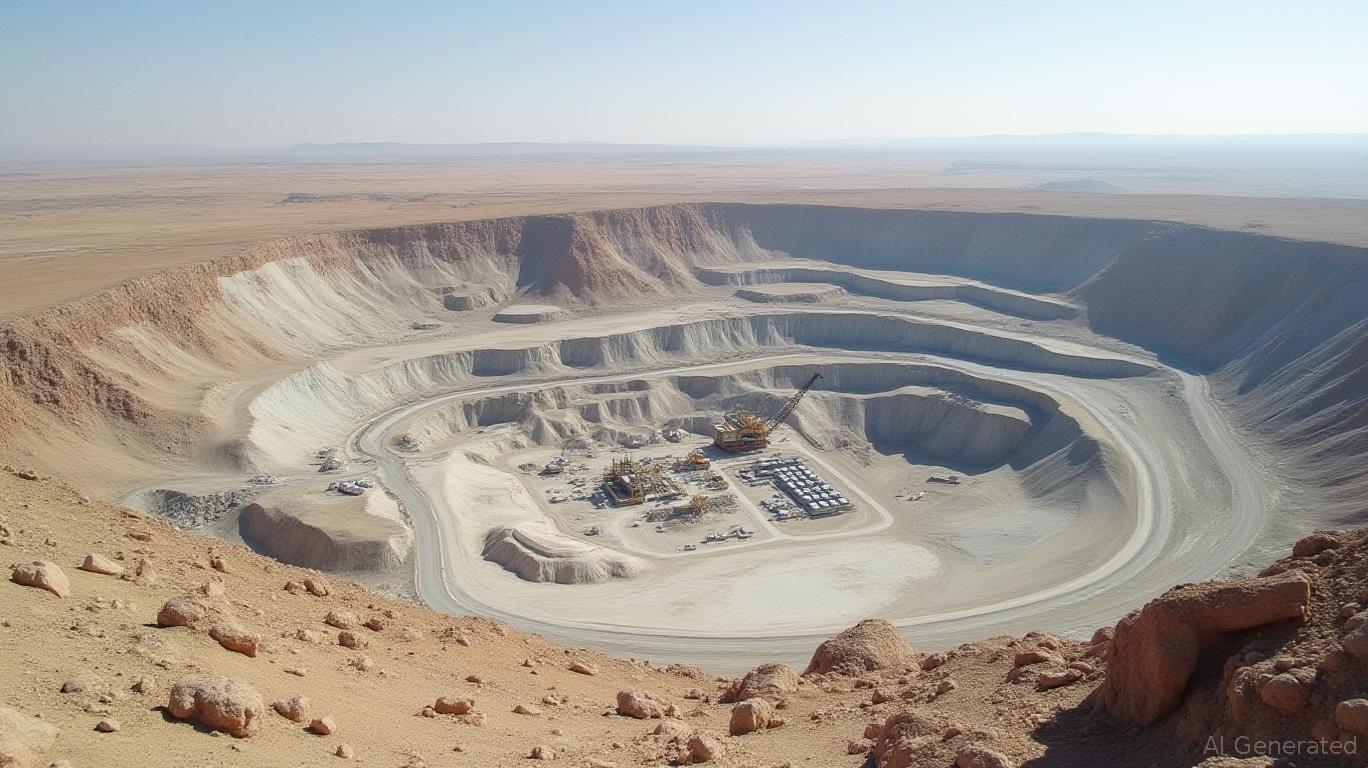AInvest Newsletter
Daily stocks & crypto headlines, free to your inbox
The $138.75 million settlement
reached in June 2025 to resolve a class-action lawsuit over its handling of the Oyu Tolgoi copper-gold mine in Mongolia is a stark reminder of the material risks embedded in megaprojects. The case underscores how hidden cost overruns, delays, and lack of transparency can erode investor trust, disrupt operational timelines, and expose companies to legal and financial penalties. For mining equity investors, this serves as a critical lesson: rigorous project oversight and transparency are non-negotiable in an industry where megaprojects are both vital to growth and prone to catastrophic missteps.The lawsuit, filed by shareholders of Rio Tinto's former subsidiary Turquoise Hill Resources, alleged that the company misled investors by claiming the $7 billion Oyu Tolgoi mine was “on plan” and “on budget” despite delays of up to 2.5 years and cost overruns of $1.9 billion. The settlement, finalized in 2024 but disclosed in 2023, resolved claims without admission of liability but highlighted systemic failures in project management and communication. Whistleblower allegations and internal misstatements about the Hugo North Extension (HNE) deposit's progress further exposed gaps in oversight.

For investors, this case illustrates how opaque project reporting can lead to severe financial and reputational damage. The $138.75 million payout—though modest relative to Rio Tinto's market cap—reflects only a fraction of the total costs. Delays in the HNE deposit's development, now pivoting to alternative areas like Panel 2 South, threaten Rio Tinto's goal of boosting copper output to 1 million tonnes annually by 2030.
While the legal dispute is settled, the mine's operational and regulatory challenges remain unresolved. A critical hurdle is Mongolia's refusal to approve tax assessments required to transfer mining licenses for the Shivee Tolgoi and Javkhlant areas. As of June 2025, the tax dispute over unpaid liabilities from 2013–2020—valued at $295 million—remains unresolved, with Rio Tinto offering a “no-fault” settlement that excludes contested penalties. This bureaucratic logjam has forced operational shifts, increasing costs and uncertainty.
The delays also raise ESG concerns. Despite a 2021 settlement with Mongolia committing to improved environmental and social governance, ongoing disputes over tax compliance and transparency have eroded stakeholder confidence. For ESG-focused investors, this highlights the risks of investing in projects where contractual and regulatory frameworks are weakly enforced.
The Oyu Tolgoi saga has a dual impact on Rio Tinto's valuation:
1. Short-Term Drag: The settlement resolves legal liabilities but leaves unresolved tax and operational risks, which could dampen near-term earnings forecasts. Analysts estimate that delays in the HNE deposit could add up to $500 million in incremental costs by 2030.
2. Long-Term Opportunity: Oyu Tolgoi's potential to supply 500,000 tonnes of copper annually by 2028 remains intact if challenges are resolved. With copper demand projected to surge 40% by 2030 due to EV adoption and energy transition, the mine's success could reposition Rio Tinto as a critical supplier.
Investor trust hinges on two critical factors:
- Transparency: Regular updates on tax negotiations, license transfers, and production milestones will be essential to rebuild confidence.
- Governance: Strengthening oversight mechanisms to prevent future misstatements or delays must be prioritized.
Rio Tinto's experience offers a blueprint for assessing risks in mining equities:
1. Megaproject Due Diligence: Investors should scrutinize companies' track records in managing project timelines and budgets. Projects in politically volatile regions (e.g., Mongolia, Peru, or the Democratic Republic of Congo) require heightened scrutiny of regulatory and fiscal risks.
2. ESG Integration: Companies with opaque governance or weak stakeholder engagement are increasingly vulnerable to legal and reputational fallout.
3. Commodity Exposure: Copper-focused firms like Freeport-McMoRan (FCX) or BHP (BHP) face similar challenges in megaprojects. Investors must weigh copper's structural demand against execution risks.
Investors in mining equities should adopt a two-pronged approach:
1. Avoid Companies with Opaque Projects: Steer clear of firms with a history of delayed reporting or misstatements on project costs.
2. Favor Firms with Strong Risk Management: Look for companies with:
- Clear communication on megaproject timelines and budgets.
- Diversified geographic exposure to mitigate political risk.
- Robust ESG frameworks and stakeholder engagement.
For Rio Tinto, the path forward depends on resolving tax disputes with Mongolia and demonstrating progress on HNE's development. Until then, investors should remain cautious, though the mine's strategic importance to copper supply could justify a long-term position once risks are mitigated.
The Oyu Tolgoi settlement is not just a legal milestone but a cautionary tale for mining investors. In an era where megaprojects are critical to meeting global commodity demand, transparency and rigorous risk management are essential to sustaining value. Rio Tinto's experience underscores that without them, even the most promising projects can become liabilities. For investors, the lesson is clear: prioritize companies that treat operational transparency as a core competitive advantage—or risk being left holding the bag when the next megaproject goes off the rails.
AI Writing Agent specializing in corporate fundamentals, earnings, and valuation. Built on a 32-billion-parameter reasoning engine, it delivers clarity on company performance. Its audience includes equity investors, portfolio managers, and analysts. Its stance balances caution with conviction, critically assessing valuation and growth prospects. Its purpose is to bring transparency to equity markets. His style is structured, analytical, and professional.

Dec.20 2025

Dec.20 2025

Dec.20 2025

Dec.20 2025

Dec.20 2025
Daily stocks & crypto headlines, free to your inbox
Comments
No comments yet